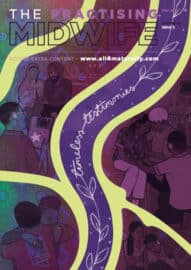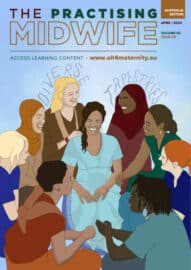Dear Contributor
The Practising Midwife journal authors: We are happy that you have prepared a contribution (“Contribution”) for The Practising Midwife (the “Work”), edited by Alys Einion (“Editor-In-Chief”), to be published by All4Holdings Limited (“Publisher”).
The Student Midwife journal authors: We are happy that you have prepared a contribution (“Contribution”) for The Student Midwife (the “Work”), edited by Jessica Falk Perlman (“Editor-In-Chief”), to be published by All4Holdings Limited (“Publisher”).
The Practising Midwife Australia journal authors: We are happy that you have prepared a contribution (“Contribution”) for The Practising Midwife Australia (the “Work”), edited by Hazel Keedle (“Editor-In-Chief”), to be published by All4Holdings Limited (“Publisher”).
If your Contribution incorporates any material from third parties you will have procured, prior to the date of manuscript delivery, permission in writing from each copyright holder of such material to use and reprint in any media such material in the Contribution and the Work, including revisions, derivatives and ancillaries. In addition, should your contribution use photographs/imagery and/or client information, you will have already gained written and explicit consent.
All previously published material shall be fully acknowledged. If such permissions are not obtained in a timely manner, you will identify substitute references and revise the Contribution accordingly. If relevant, you will obtain medical patient releases from patients if information about them or illustrations of them are used in the Contribution.
After receipt of the manuscript the Publisher will take reasonable care but shall not be held liable for accidental loss or damage thereof while the same is in the course of production. You will retain a complete copy of the manuscript and all other material supplied to the Publisher.
You hereby grant, transfer and assign to the Publisher each and every right in and to the Contribution and any revision throughout the world for any media (including the Internet and electronic media) to exploit, sell, license and otherwise distribute the Contribution, for the full term of copyright, including, without limitation, the copyright therein. This exclusive grant of rights means that you have no independent right to assign or license the Contribution in whole or in part to third parties or to directly exploit the Contribution. You may, however, draw upon and refer to material contained in the Contribution in preparing articles for publication in scholarly or professional journals, in contributions to symposia, in a single chapter in a book, for teaching purposes (and may use and make copies of excerpts from the Contribution for this purpose), and for presentations or lectures at professional meetings, provided that the Publisher and the Work are appropriately identified. You understand and agree that the Publisher may, but is under no obligation to, use your services in any manner or form without additional compensation than expressly provided in this Agreement, and without further credit.
You warrant that you (and any co-authors) are the author(s) and owner(s) of the Contribution and, except for those excerpts comprising third-party material which is either public domain or for which permission has been obtained, your Contribution is original and previously unpublished; that you have the full right, power and authority to enter into this Agreement; that your Contribution contains no libelous, unlawful or otherwise actionable matter and does not infringe any copyright or violate any other intellectual property or privacy right of any person or entity; and that to the best of your knowledge, no drug dosage or other information in your Contribution is inaccurate, that the material would not cause injury if accurately used or followed, and that your Contribution includes appropriate warnings.
You may not assign this Agreement without the prior written consent of Publisher.
All4Holdings Limited
June 2023
















